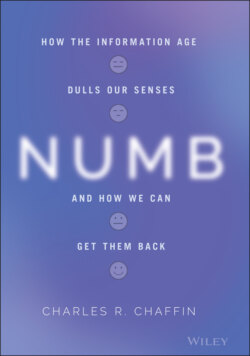Читать книгу Numb - Charles R. Chaffin - Страница 15
CHAPTER 3 The News
Оглавление“The primary purpose of journalism is to provide citizens with the information they need to be free and self‐governing.”
— Bill Kovach and Tom Rosenstiel, The Elements of Journalism
It seems as if there are countless sources for news, including broadcast and cable channels, radio, newspapers, and online platforms, much of which can be accessed directly or via social media. Within each medium, we have to decide which source is trustworthy and which is not, separating fact from opinion and seeking and objectivity over bias. Much of the news draws us to the sensational, prioritizing the graphic over the detail, and in some cases the flashy over substance. In addition, we all have an innate desire for vindication of our opinions, leading us to sources that provide commentary that lends itself to confirmation bias. And if that is not enough, the fast pace of today's news cycle makes the stories that have yet to achieve even their 15 minutes of fame already obsolete, as breaking news headlines suddenly replace the previous ones. As I write this chapter, there are fires blazing through the western part of the United States; two hurricanes threatening the Gulf Coast; an endless carnival of accusations, conspiracy theories, and polls related to the 2020 election; heightened worry about nuclear testing in North Korea; and, not to be outdone, a worldwide pandemic. Each of these stories brings a constant stream of breaking news alerts, push notifications, and opinions. The news today seems like a salad tossed with headline fatigue, information overload, confirmation bias, and way too much sensationalism dressing. The news can be overwhelming.
Our main sources of news have evolved over the past many decades. In the 1960s, network news was considered separate and apart from the entertainment division. Profitable networks thought that a well‐funded and respected news division would help both with their reputation as well as mitigate any regulatory pressures from the government. At that time, network news was not designed to make a profit. And yet visibility was high. Walter Cronkite, anchor of the CBS Evening News from the 1960s to the 1980s, was voted “the most trusted man in America.” At the same time, local news and newspapers were thriving, representing their cities and regions and cornering the market on commercial and print advertising revenue.
The news landscape changed radically in the 1980s as cable news grew in stature and media conglomerates began taking ownership of the broadcast networks. With this new ownership came a bigger focus on profit within the news divisions. By the 1990s, advertising became more targeted and the audiences for network news were beginning to erode with the increased competition from cable news. In the 2000s, the internet began its assault on newspaper circulation, while social media platforms launched to create an even more competitive environment. Today, according to the Pew Research Center, 49% of Americans get their news from television, with social media now outpacing newspapers as a primary news source. Dr. Michael Griffin, professor of media studies at Macalester College and author of Media and Community says, “In the evolution of media platforms we have moved from choosing a program lineup on a particular broadcast network (ABC, CBS, NBC, or PBS) to ‘surfing’ cable TV, with many more channels competing to grab and hold our attention with increasingly overdramatized, politicized, and specifically targeted content, to the web, with an algorithmic, hyperlinked system designed to harvest clicks. The business activity we refer to as ‘attention merchants’ evolved from radio, television, and popular publications (e.g. ‘the magazine stand’) to the Web, which encourages an almost constant, addictive monitoring.” Media platforms are now full participants in the attention economy, using sensationalism and opinion to attract and retain as many eyeballs as possible to deliver to advertisers.
